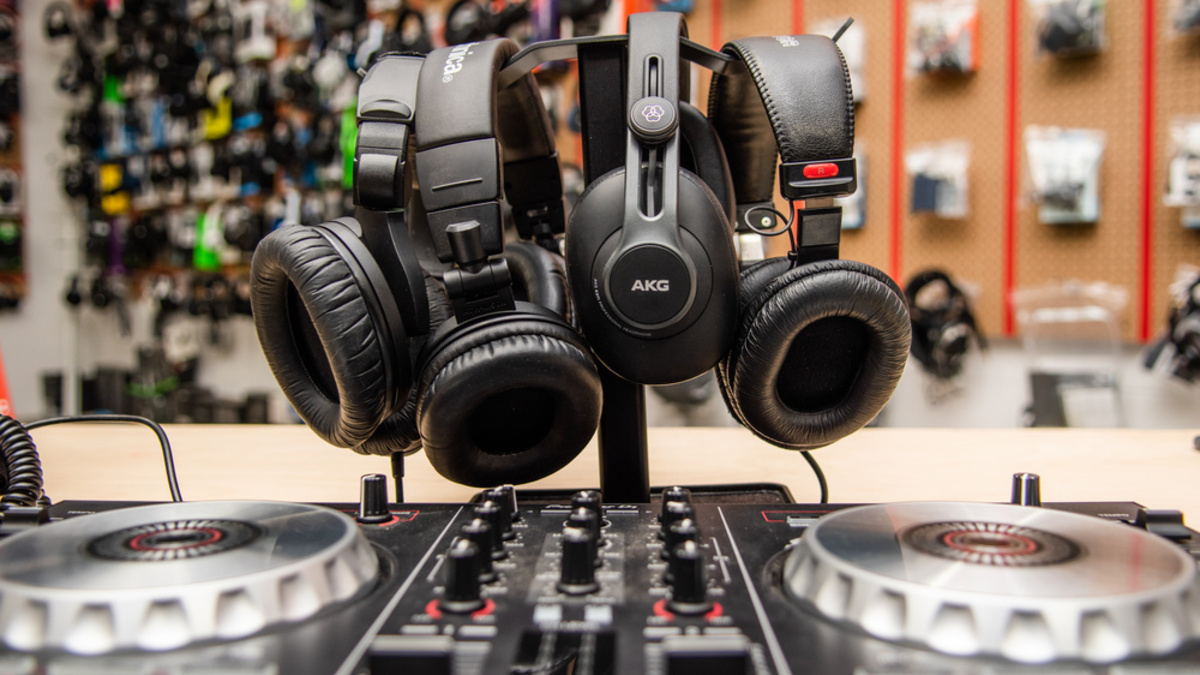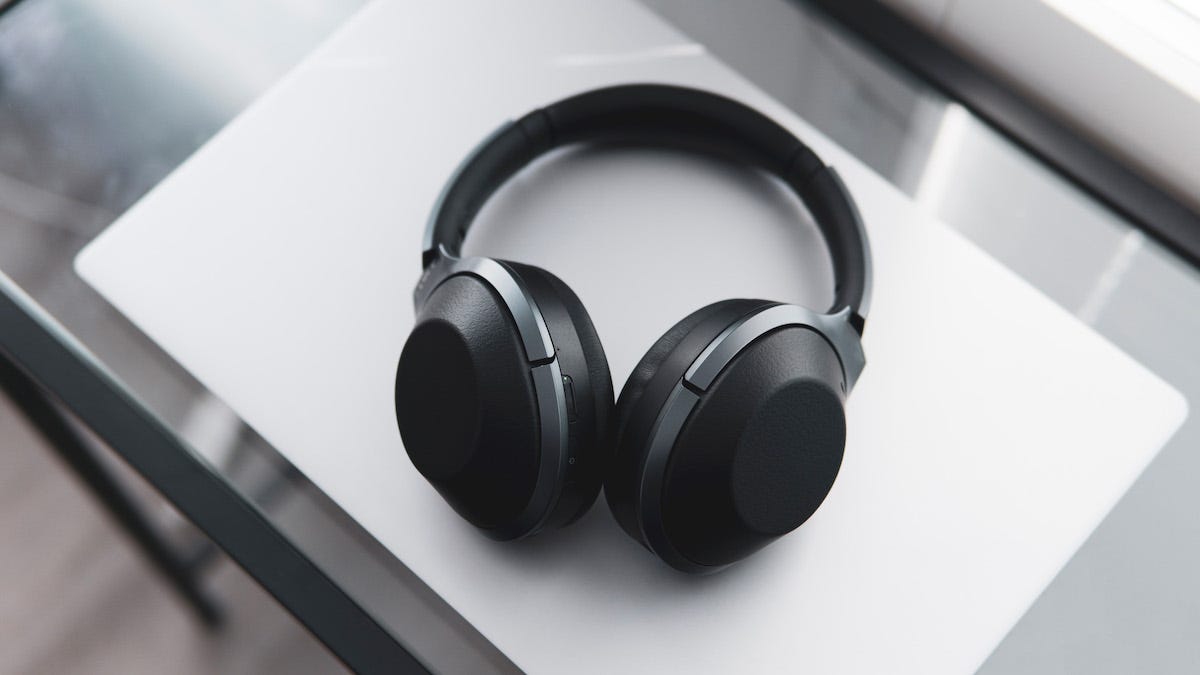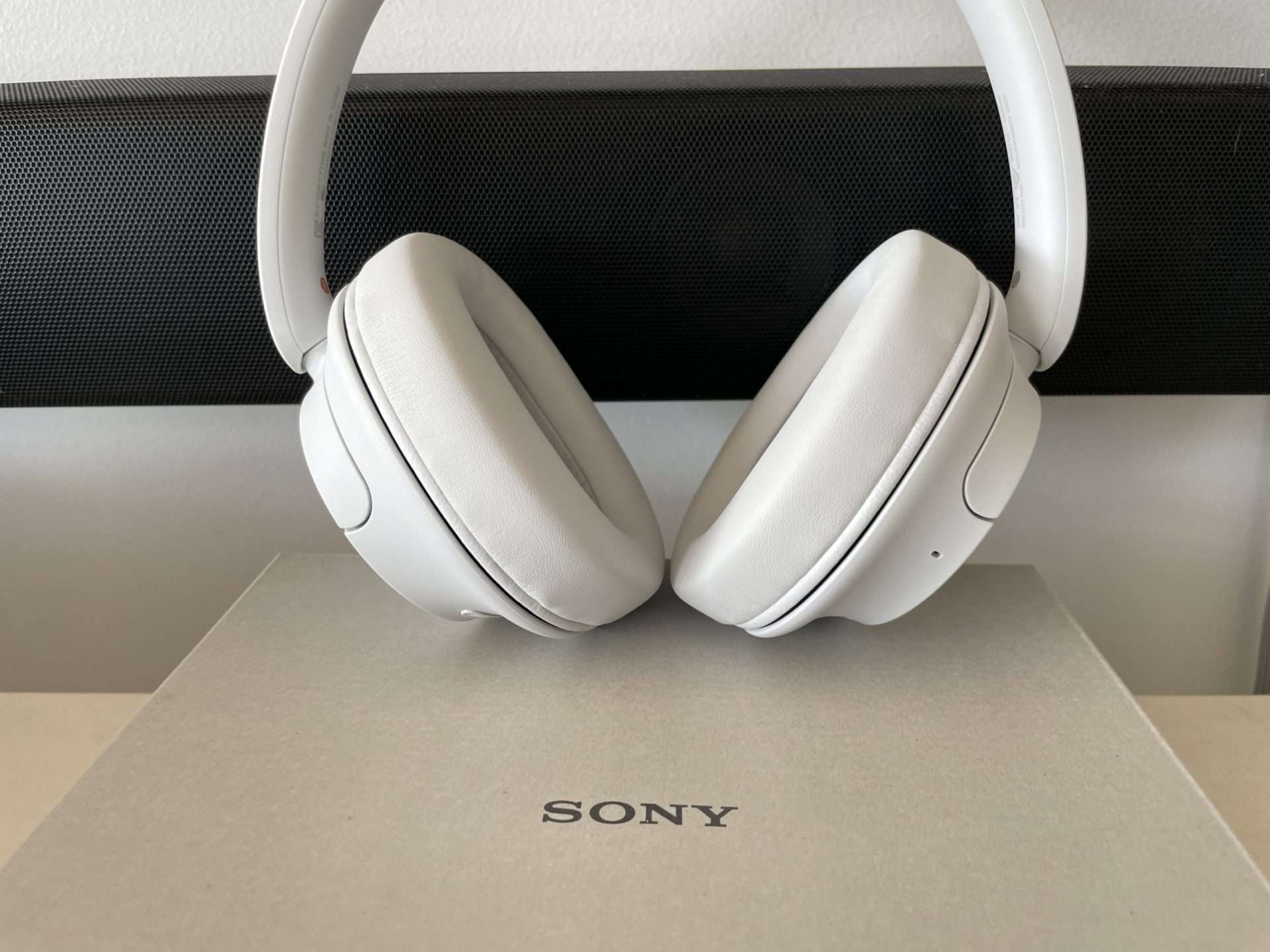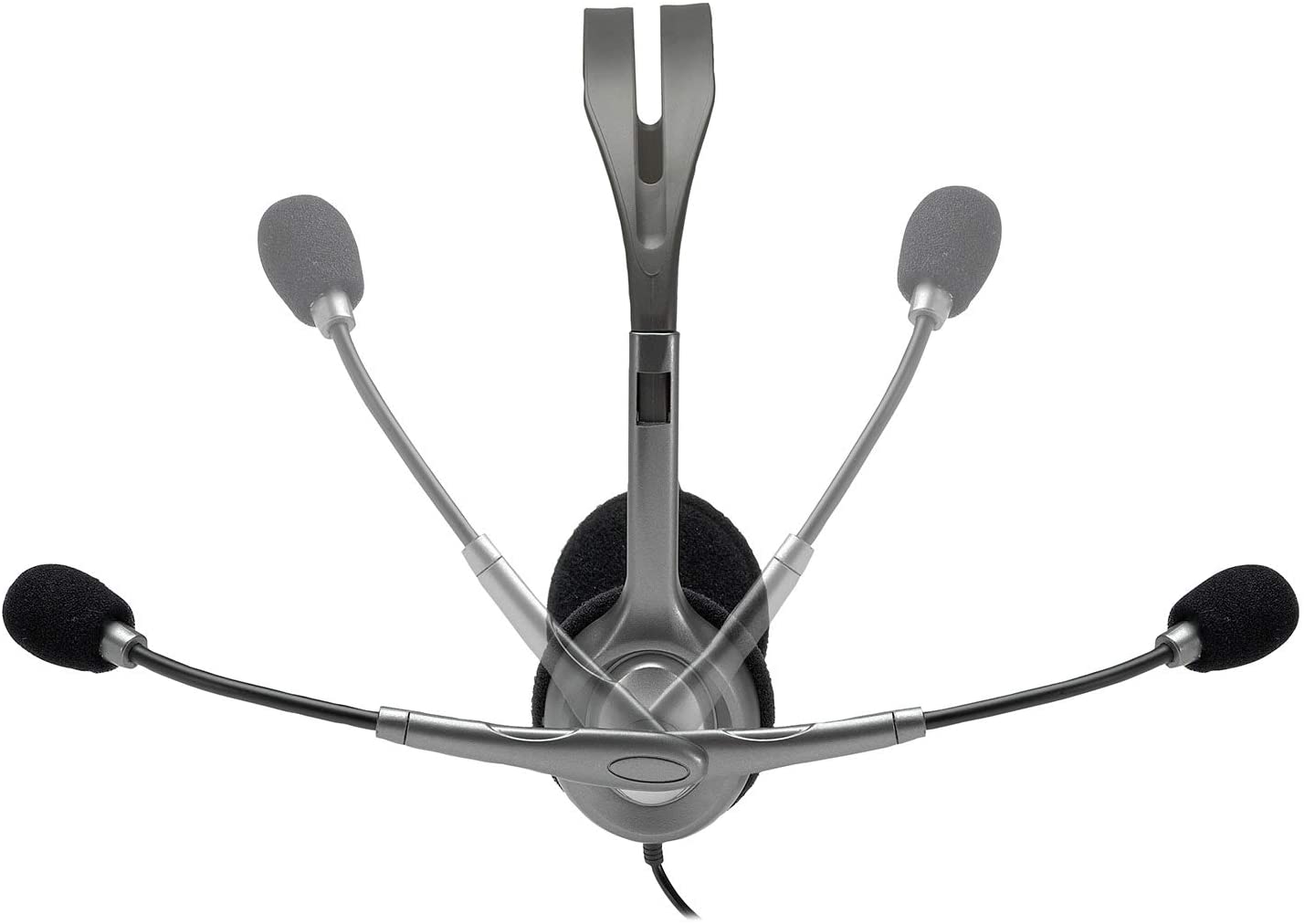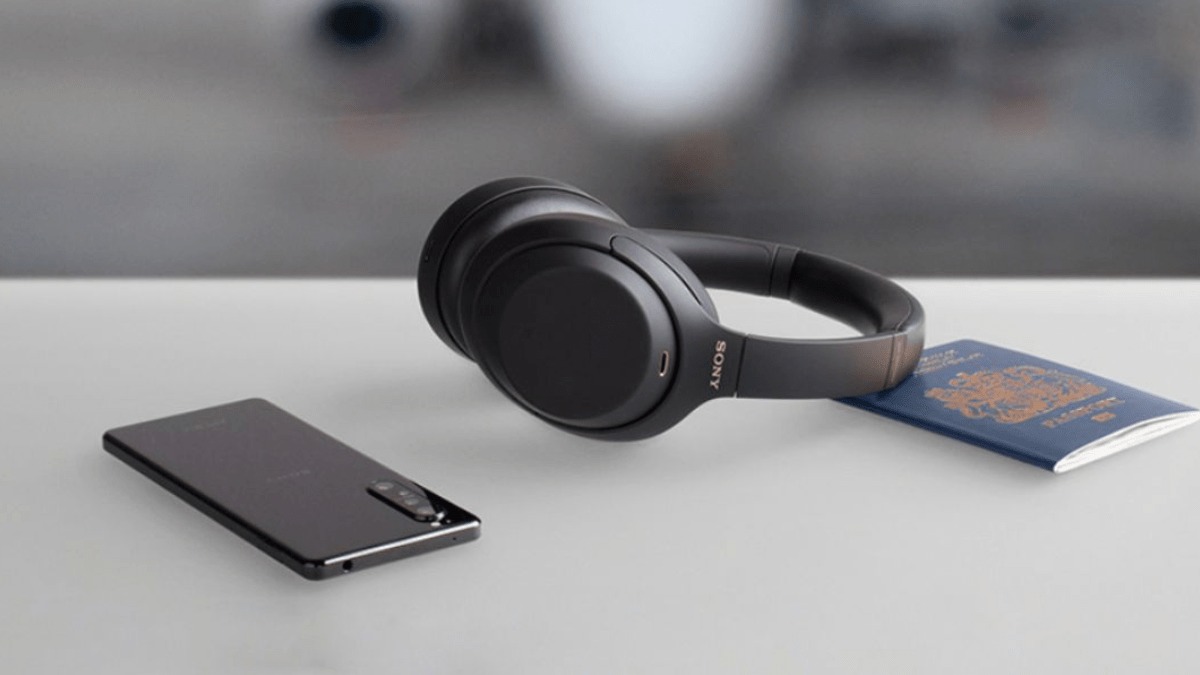Home>Production & Technology>Noise Cancellation>What Are The Best Noise Cancellation Headphones


Noise Cancellation
What Are The Best Noise Cancellation Headphones
Modified: January 22, 2024
Discover the best noise cancellation headphones on the market. Enhance your audio experience and eliminate background noise with these top-rated headphones.
(Many of the links in this article redirect to a specific reviewed product. Your purchase of these products through affiliate links helps to generate commission for AudioLover.com, at no extra cost. Learn more)
Table of Contents
- Introduction
- How Does Noise Cancellation Work?
- Types of Noise Cancellation Headphones
- Over-Ear vs. On-Ear vs. In-Ear Headphones
- Key Features to Consider
- Top Noise Cancellation Headphones of 2021
- Wireless vs. Wired Noise Cancellation Headphones
- Benefits of Using Noise Cancellation Headphones
- Potential Drawbacks of Noise Cancellation Headphones
- Tips for Choosing the Right Pair of Noise Cancellation Headphones
- Conclusion
Introduction
Welcome to the world of noise cancellation headphones, where blissful silence is just a click away. In today’s fast-paced and noisy world, finding peace and tranquility can be a challenge. Whether you’re trying to concentrate on work, relax during a long flight, or simply enjoy your favorite music without interruptions, noise cancellation headphones are the ultimate solution.
Noise cancellation technology is designed to block out external sounds and create a serene audio experience. It works by using microphones to capture ambient noise and then generating an equal and opposite sound wave to cancel it out. This innovative technology allows you to immerse yourself in your audio content while effectively silencing the hustle and bustle of the outside world.
With the increasing demand for noise cancellation headphones, the market is flooded with a wide range of options. To help you navigate through the choices, this article will provide you with all the information you need to know before making a purchase. From understanding how noise cancellation works to exploring different types of headphones, we’ve got you covered.
One of the first decisions you’ll need to make is deciding between over-ear, on-ear, or in-ear headphones. Each type comes with its own set of advantages and considerations. Over-ear headphones provide excellent noise isolation and comfort, while on-ear headphones offer a more portable and compact design. In-ear headphones, also known as earbuds, are the most lightweight and convenient option.
In addition to the type of headphones, there are other key features to consider. Battery life, sound quality, connectivity options, and comfort are all important factors that can greatly enhance your overall experience. We’ll delve deeper into these features and provide you with a comprehensive buying guide to help you make an informed decision.
Furthermore, we’ll showcase some of the top noise cancellation headphones of 2021, highlighting their features and performance. Whether you’re a budget-conscious buyer or looking for the latest and greatest in audio technology, our list has something for everyone.
But noise cancellation headphones aren’t without their drawbacks. Understanding the potential downsides, such as reduced sound quality in some models and the need for regular battery recharging, will help you make a well-rounded decision.
By the end of this article, you’ll be equipped with the knowledge and confidence to choose the perfect noise cancellation headphones tailored to your needs. So, sit back, relax, and get ready to experience a world of serene and immersive sound.
How Does Noise Cancellation Work?
At first glance, the idea of cancelling out noise may seem like a magic trick, but in reality, it’s a fascinating scientific process. Noise cancellation technology operates on the principle of destructive interference, which involves creating sound waves that are exactly opposite to the incoming sound waves, thereby neutralizing them.
Noise cancellation headphones achieve this through a combination of hardware and software components. Let’s take a closer look at the process:
1. Microphone Pickup: Noise cancellation headphones are equipped with tiny microphones that pick up the sounds from the environment. These microphones capture the ambient noises, such as traffic, chatter, or background hum.
2. Noise Analysis: Once the microphones capture the sound waves, the built-in electronics analyze the frequencies and amplitudes of the noise. This analysis helps the device understand the characteristics of the ambient noise.
3. Anti-Noise Generation: Armed with the knowledge of the incoming noise, the headphones generate anti-noise signals. These signals have the same frequency and amplitude as the ambient noise but are precisely out of phase, effectively canceling each other out.
4. Mixing and Playback: The anti-noise signals are mixed with your audio content, such as music or speech, by the headphone’s circuitry. This mixed signal is then played back through the headphone speakers or earbuds, creating a seamless listening experience where external noises are significantly reduced or eliminated.
This advanced technology works best with constant sounds like plane engines or air conditioning drones, allowing users to experience a significant reduction in background noise. However, sudden, sharp sounds like a door slamming or a dog barking may not be completely eliminated.
It’s worth noting that noise cancellation works most effectively for low-frequency sounds. Higher frequency noises, such as crying babies or high-pitched sirens, can be more challenging to cancel out completely.
Overall, noise cancellation technology has come a long way and continues to evolve. Advanced algorithms, improved microphones, and faster processors have led to more efficient and accurate noise cancellation, making it an essential feature in today’s headphones.
Types of Noise Cancellation Headphones
Noise cancellation headphones come in various forms, each with its own set of advantages and considerations. Let’s explore the different types:
- Over-Ear Headphones: Over-ear headphones, also known as circumaural headphones, feature large ear cups that fit completely over your ears. These headphones provide excellent noise isolation as they create a seal around your ears, blocking out a significant amount of external noise. Over-ear headphones are renowned for their comfort and immersive sound experience, making them ideal for long listening sessions or when you want to fully immerse yourself in your audio content.
- On-Ear Headphones: On-ear headphones, also called supra-aural headphones, rest on your ears rather than enclosing them. They are generally more compact and portable compared to over-ear headphones. While they may not provide the same level of noise isolation as over-ear headphones, they still offer decent noise cancellation and can be a more lightweight option for those who are always on the go.
- In-Ear Headphones: In-ear headphones, commonly referred to as earbuds or in-ear monitors (IEMs), are the most compact and portable option. These headphones fit snugly inside the ear canal, forming a seal that blocks out external noise. They are incredibly lightweight and convenient, making them suitable for sports activities or when you want a minimalist and discreet listening experience. However, the noise cancellation capability of in-ear headphones may not be as effective as over-ear or on-ear models.
Each type of noise cancellation headphones caters to different preferences and lifestyle needs. The choice ultimately depends on factors such as comfort, portability, and the level of noise isolation you desire. It’s essential to consider these factors before making a decision to ensure that you select the type of headphones that best suits your needs.
Over-Ear vs. On-Ear vs. In-Ear Headphones
When it comes to choosing noise cancellation headphones, one of the primary decisions you’ll need to make is selecting the right style for you. Here’s a breakdown of the key differences between over-ear, on-ear, and in-ear headphones:
Over-Ear Headphones:
Over-ear headphones are known for their large ear cups that fully encase the ears. This design offers several advantages. Firstly, the spacious ear cups provide excellent noise isolation by creating a seal around the ears, effectively blocking out external sounds. This makes them ideal for immersive listening experiences, such as enjoying music or watching movies. Additionally, over-ear headphones generally offer superior comfort due to the cushioning and larger frame that distributes the weight more evenly over the head. This makes them suitable for long periods of use without causing discomfort. However, they tend to be bulkier and less portable compared to other headphone styles, making them better suited for home or office use.
On-Ear Headphones:
On-ear headphones rest on the ears rather than fully enclosing them. They are generally more compact and portable compared to over-ear headphones. On-ear headphones can provide a good balance between noise isolation and awareness of the surrounding environment. While they may not provide the same level of noise cancellation as over-ear headphones, they still offer decent noise reduction. On-ear headphones are a popular choice for those who want a more lightweight option and value portability. They are suitable for everyday use, such as commuting or working in a shared space. However, they may not be as comfortable for extended use, as the pressure can cause discomfort on the ears over time.
In-Ear Headphones:
In-ear headphones, often referred to as earbuds or in-ear monitors (IEMs), are the smallest and most portable option. They fit snugly inside the ear canal, creating a seal that blocks out external noise. In-ear headphones are incredibly lightweight and convenient, making them suitable for activities like running, working out, or traveling. While they provide some degree of noise cancellation, it may not be as effective as with over-ear or on-ear headphones. Additionally, the fit and comfort of in-ear headphones can vary from person to person. Some may find them comfortable and secure, while others may prefer the feel of larger headphones.
Ultimately, the choice between over-ear, on-ear, and in-ear headphones depends on your personal preferences and lifestyle. Consider factors such as comfort, noise isolation, portability, and intended use when making your decision. It’s also worth trying out different styles to see which one fits you best, as individual comfort and fit can vary.
Key Features to Consider
When searching for the perfect noise cancellation headphones, several key features should be taken into consideration. These features can greatly enhance your overall listening experience and ensure that you’re making a well-informed purchase. Here are some important factors to keep in mind:
- Noise Cancellation Strength: The effectiveness of noise cancellation varies among different models. Some headphones offer more robust noise cancellation, while others provide a more subtle reduction in external noise. Consider the level of noise isolation you require for your specific needs. If you frequently find yourself in loud environments or desire complete tranquility, opt for headphones with strong noise cancellation capabilities.
- Sound Quality: While noise cancellation is an essential feature, don’t overlook the sound quality. Look for headphones that offer a balanced and immersive sound experience, with clear highs, rich mids, and deep bass. A well-tuned audio profile will ensure that you can fully enjoy your music, movies, and podcasts without compromising on sound quality.
- Battery Life: Noise cancellation headphones typically operate on built-in batteries. Consider the battery life of the headphones, especially if you plan on using them for extended periods or during long trips. Look for headphones that offer ample battery life to ensure uninterrupted listening sessions. It’s worth noting that wireless headphones generally have more limited battery life compared to their wired counterparts.
- Connectivity Options: Determine the connectivity options that align with your preferences. Wireless Bluetooth headphones provide convenient and tangle-free usage, allowing you to move freely without being tethered to your device. However, if you prefer a wired connection or need compatibility with devices that lack Bluetooth connectivity, make sure to choose headphones that offer a wired option as well.
- Comfort: Comfort is vital, especially if you plan on wearing the headphones for extended periods. Look for features such as cushioned ear cups, adjustable headbands, and lightweight designs that offer a comfortable fit. Proper ergonomics and a secure fit ensure that you can wear the headphones comfortably for hours without experiencing discomfort or fatigue.
- Additional Features: Consider any additional features that may enhance your listening experience. Some headphones come equipped with built-in microphones for hands-free calls, touch controls for easy navigation, or smart features that allow you to customize the audio settings. These extra features can provide added convenience and functionality.
By considering these key features, you’ll be able to narrow down your options and find noise cancellation headphones that meet your specific needs and preferences. Remember to prioritize the features that matter most to you, whether it’s strong noise cancellation, excellent sound quality, or long battery life.
Top Noise Cancellation Headphones of 2021
In the ever-evolving world of noise cancellation headphones, several models have stood out in terms of performance, features, and customer satisfaction. Here are some of the top noise cancellation headphones of 2021:
- Sony WH-1000XM4: Building upon the success of its predecessor, the Sony WH-1000XM4 is a top contender in the noise cancellation headphones market. It boasts exceptional noise cancellation capabilities, immersive sound quality, and an impressive battery life of up to 30 hours. Equipped with smart features like adaptive sound control and a comfortable, ergonomic design, the WH-1000XM4 is a popular choice among audiophiles and frequent travelers.
- Bose QuietComfort 35 II: Known for its industry-leading noise cancellation technology, the Bose QuietComfort 35 II offers superb noise isolation in various environments. The headphones deliver a well-balanced audio experience, with crisp details and deep, powerful bass. With up to 20 hours of battery life, comfortable ear cushions, and voice assistant integration, the QuietComfort 35 II remains a top choice for those seeking an excellent all-around noise cancellation experience.
- Apple AirPods Pro: The Apple AirPods Pro have gained popularity for their sleek design, seamless integration with Apple devices, and active noise cancellation capabilities. These in-ear headphones feature customizable silicone ear tips for a secure fit and effective noise isolation. The AirPods Pro offer impressive sound quality, transparency mode for awareness of your surroundings, and easy access to Siri. With an impressive combination of portability, functionality, and noise cancellation performance, the AirPods Pro have become a popular choice among Apple enthusiasts.
- Sennheiser Momentum 3 Wireless: The Sennheiser Momentum 3 Wireless headphones combine stylish aesthetics with exceptional sound quality and noise cancellation capabilities. These over-ear headphones feature refined noise cancellation technology that adapts to your environment. With a luxurious design, comfortable fit, and intuitive touch controls, the Momentum 3 Wireless offers a premium listening experience. The headphones also boast a long battery life of up to 17 hours and support for virtual assistants.
- Jabra Elite 85h: The Jabra Elite 85h is a feature-packed pair of noise cancellation headphones. With the ability to automatically adjust the noise cancellation based on your surroundings, it delivers an immersive and personalized listening experience. The Elite 85h also offers impressive battery life of up to 36 hours, comfortable ear cushions, and durability with its rain and dust resistance. These headphones are a great choice for those seeking versatility, long battery life, and excellent noise reduction.
These are just a few examples of the top noise cancellation headphones available in 2021. It’s important to consider your specific needs and preferences before making a purchase. Whether you prioritize noise cancellation strength, sound quality, comfort, or additional features, these top models are a great starting point in your search for the perfect pair of noise cancellation headphones.
Wireless vs. Wired Noise Cancellation Headphones
When choosing noise cancellation headphones, one of the decisions you’ll need to consider is whether to opt for wireless or wired headphones. Both options have their pros and cons, so let’s take a closer look at the differences between wireless and wired noise cancellation headphones:
Wireless Noise Cancellation Headphones:
Wireless noise cancellation headphones have gained popularity due to their convenience and freedom from tangled wires. They use Bluetooth technology to connect to your audio source, such as a smartphone or tablet, without the need for physical cables. This wireless connectivity allows you to move around freely without being tethered to your device. Wireless headphones are particularly useful for activities like workouts, commuting, or simply avoiding the hassle of untangling cords.
Some key advantages of wireless noise cancellation headphones include:
- Freedom of movement and convenience without wires.
- Compatibility with a wide range of Bluetooth-enabled devices.
- The ability to connect to multiple devices simultaneously.
- Intuitive touch controls and easy access to voice assistants.
However, wireless headphones also come with a few considerations:
- They require battery power and need to be recharged regularly. Be sure to check the battery life of the headphones before purchase.
- Bluetooth connectivity may introduce slight latency, which can be noticeable during activities like gaming or watching videos.
- Wireless headphones may be more expensive compared to their wired counterparts.
Wired Noise Cancellation Headphones:
Wired noise cancellation headphones, on the other hand, rely on a physical connection to your audio device using a cable, typically with a 3.5mm audio jack. These headphones do not require battery power or Bluetooth connectivity. They provide a direct and uninterrupted audio signal without the potential latency issues associated with wireless headphones.
Some advantages of wired noise cancellation headphones include:
- Reliable and consistent audio quality and performance.
- No need for battery recharging.
- Compatibility with various audio devices, including those without Bluetooth capability.
- Potentially more affordable options compared to wireless headphones.
However, wired headphones do come with limitations:
- The physical cable can sometimes be cumbersome or may get tangled.
- Restricted movement due to the limited range of the cable.
- Some newer devices, particularly smartphones, may not have a dedicated headphone jack and require a separate adapter.
Ultimately, the choice between wireless and wired noise cancellation headphones depends on your specific needs and preferences. Consider factors such as convenience, battery life, compatibility, and desired audio quality to determine which option is best for you. Whether you prioritize the freedom of wireless technology or the reliability of a wired connection, both options can provide excellent noise cancellation performance.
Benefits of Using Noise Cancellation Headphones
Noise cancellation headphones offer a plethora of benefits that can greatly enhance your listening experience and overall well-being. Here are some key advantages of using noise cancellation headphones:
- Improved Focus and Concentration: Whether you’re working in a noisy office, studying in a bustling coffee shop, or trying to focus on a task at home, noise cancellation headphones can help create a quiet and distraction-free environment. By blocking out external noise, you can concentrate better and improve your productivity.
- Enhanced Music and Media Experience: Noise cancellation headphones allow you to fully immerse yourself in your audio content. By reducing background noise, you can enjoy the subtle details and nuances of your favorite music, movies, or podcasts. The enhanced sound clarity and improved bass response contribute to a more immersive and enjoyable listening experience.
- Reduced Hearing Fatigue: Continuous exposure to loud or ambient noises can lead to hearing fatigue and even long-term hearing damage. Noise cancellation headphones help protect your ears by reducing the need to increase the volume to drown out external sounds. This can result in less strain on your ears, allowing you to enjoy audio content for longer periods without discomfort.
- Improved Sleep Quality: If you have trouble sleeping due to external noises like snoring, traffic, or neighborhood disturbances, noise cancellation headphones can be a game-changer. By blocking out these sounds, you can create a peaceful and serene environment that promotes better sleep quality and helps you wake up feeling refreshed.
- Travel Comfort: Whether you’re on a plane, train, or bus, noise cancellation headphones can make your travel experience more enjoyable. They help eliminate the constant drone of engines and the chatter of fellow passengers, allowing you to relax and enjoy your journey in peace. Additionally, noise cancellation headphones can reduce the fatigue associated with travel and help you arrive at your destination feeling more refreshed.
- Stress Reduction: Excessive noise can contribute to stress and anxiety. Noise cancellation headphones provide a welcome respite from the chaos of the outside world, allowing you to create a calm and serene personal space. By reducing external disturbances, they promote a sense of relaxation and help alleviate stress, leading to improved mental well-being.
Noise cancellation headphones offer a range of benefits, from improved focus and concentration to enhanced audio experiences and stress reduction. Whether you’re a frequent traveler, student, office worker, or simply someone who enjoys immersing themselves in music, noise cancellation headphones can greatly enhance your everyday life.
Potential Drawbacks of Noise Cancellation Headphones
While noise cancellation headphones offer numerous benefits, it’s essential to be aware of potential drawbacks before making a purchase. Here are some considerations to keep in mind:
- Reduced Audio Quality: In some noise cancellation headphones, especially those at lower price points, the noise cancellation feature may impact the overall audio quality. The cancellation process can attenuate certain frequencies or introduce slight audio artifacts, resulting in a slightly different sound signature compared to non-noise cancellation headphones. However, many high-quality noise cancellation headphones have advanced technology that minimizes this drawback.
- Battery Life and Charging: Noise cancellation headphones rely on internal batteries to power the active noise cancellation feature. While modern models offer impressive battery life, they still require regular charging. Forgetting to charge your headphones before a long trip or during extended use can lead to interrupted listening sessions. It’s important to consider battery life and charging requirements when selecting noise cancellation headphones.
- Dependency on Power: Active noise cancellation requires power to function. If the battery of your noise cancellation headphones runs out or if you forget to turn on the noise cancellation feature, you may not experience the desired noise reduction. This dependency on power can be a limitation, especially in situations where you may not have access to a power source for an extended period.
- Possible Pressure Sensation: Some individuals may experience a slight pressure sensation on their ears when using over-ear or on-ear noise cancellation headphones, especially for extended periods. This sensation is due to the physical seal created by the headphones to block out external noise. While it’s not uncomfortable for most users, it’s worth considering if you are particularly sensitive to pressure on your ears.
- Ineffectiveness with Sudden Loud Sounds: Noise cancellation technology is most effective at blocking out continuous low-frequency sounds like the hum of an airplane engine or HVAC systems. However, sudden loud noises, such as car horns or banging noises, may not be completely cancelled out by noise cancellation headphones. While they still provide some reduction, it’s important to remain aware of your surroundings, especially in environments where safety could be a concern.
- Higher Price Points: Noise cancellation technology is an advanced feature that adds to the overall cost of headphones. As a result, noise cancellation headphones can be more expensive than their non-noise cancellation counterparts. However, the cost is often justified by the enhanced listening experience and the benefits they provide.
Considering these potential drawbacks will help you make an informed decision when choosing noise cancellation headphones. It’s crucial to weigh the pros and cons based on your specific needs and preferences to ensure that you select the headphones that best suit your requirements.
Tips for Choosing the Right Pair of Noise Cancellation Headphones
With the wide array of noise cancellation headphones available on the market, finding the perfect pair can be overwhelming. To help simplify the selection process, here are some tips to consider when choosing the right pair of noise cancellation headphones:
- Consider Your Listening Environment: Think about the specific environments in which you’ll be using your headphones. Are you primarily using them in a noisy office, during travel, or for daily commutes? Understanding the noise levels and the types of sounds you need to block out will guide you in selecting headphones with the appropriate noise cancellation strength.
- Determine Your Preferred Form Factor: Decide whether you prefer over-ear, on-ear, or in-ear headphones. Over-ear headphones typically offer superior noise isolation and comfort, while in-ear headphones provide a more lightweight and portable option. On-ear headphones strike a balance between the two. Choosing the right form factor will depend on your comfort preferences and intended use.
- Check Noise Cancellation Performance: Look for headphones that have effective noise cancellation capabilities. Pay attention to reviews or specifications that mention the level of noise reduction they can achieve. Some headphones offer adjustable noise cancellation settings that allow you to customize the amount of external noise you want to block out, which can be useful in different situations.
- Consider Sound Quality: While noise cancellation is important, don’t overlook the sound quality of the headphones. Look for headphones that offer a balanced audio profile with clear highs, detailed mids, and deep bass. Reading reviews and listening to sample audio can give you an idea of the headphone’s sound signature and compatibility with your music preferences.
- Evaluate Comfort and Fit: Comfort is vital, especially if you plan on wearing the headphones for long periods. Look for headphones with well-padded ear cups and a lightweight design. Adjustable headbands and swiveling ear cups can provide a customizable and secure fit. If possible, try the headphones on before purchasing to ensure they are comfortable and well-suited to your head size and shape.
- Consider Battery Life and Charging Options: If you opt for wireless noise cancellation headphones, check their battery life and charging options. Consider how long you typically use headphones in a single session and ensure that the battery life can accommodate your needs. Additionally, look for headphones with quick charging capabilities or the ability to use them in wired mode when the battery runs out.
- Read User Reviews and Expert Opinions: Take advantage of user reviews and expert opinions to gain insights into the real-world performance of the headphones you’re interested in. Pay attention to feedback related to noise cancellation effectiveness, audio quality, comfort, build quality, and overall user satisfaction. This information can help you make an informed decision and avoid potential disappointments.
By considering these tips, you’ll be well-equipped to choose the right pair of noise cancellation headphones that meet your specific needs. Remember to prioritize your personal preferences and requirements to find headphones that provide the optimal combination of noise cancellation performance, comfort, sound quality, and overall value for your investment.
Conclusion
Noise cancellation headphones are a game-changer in the world of audio technology, allowing us to escape the noise and chaos of our surroundings and immerse ourselves in a world of blissful sound. They provide numerous benefits, such as improved focus, enhanced audio experiences, reduced hearing fatigue, and stress reduction.
When choosing noise cancellation headphones, it’s important to consider factors such as noise cancellation strength, sound quality, comfort, battery life, and connectivity options. The type of headphones, whether over-ear, on-ear, or in-ear, should also be taken into account, along with any additional features that may enhance your listening experience.
Some of the top noise cancellation headphones of 2021 include the Sony WH-1000XM4, Bose QuietComfort 35 II, Apple AirPods Pro, Sennheiser Momentum 3 Wireless, and Jabra Elite 85h. These models offer exceptional noise cancellation performance, immersive sound quality, and a range of features to suit different needs and preferences.
However, it’s important to be aware of potential drawbacks, such as reduced audio quality in certain models, the need for regular battery charging, and the dependence on power for active noise cancellation. Understanding these limitations will help you make an informed decision that aligns with your preferences.
In summary, noise cancellation headphones provide a sanctuary of tranquility in our busy lives. They elevate our audio experiences, improve concentration, and reduce stress. By considering the tips provided and understanding your specific needs, you’ll be able to choose the right pair of noise cancellation headphones that cater to your preferences and enhance your audio journey.



